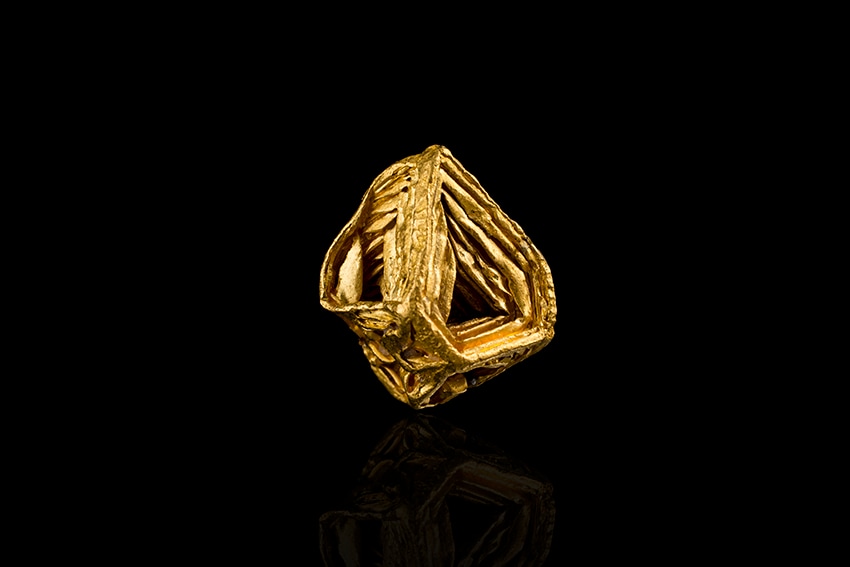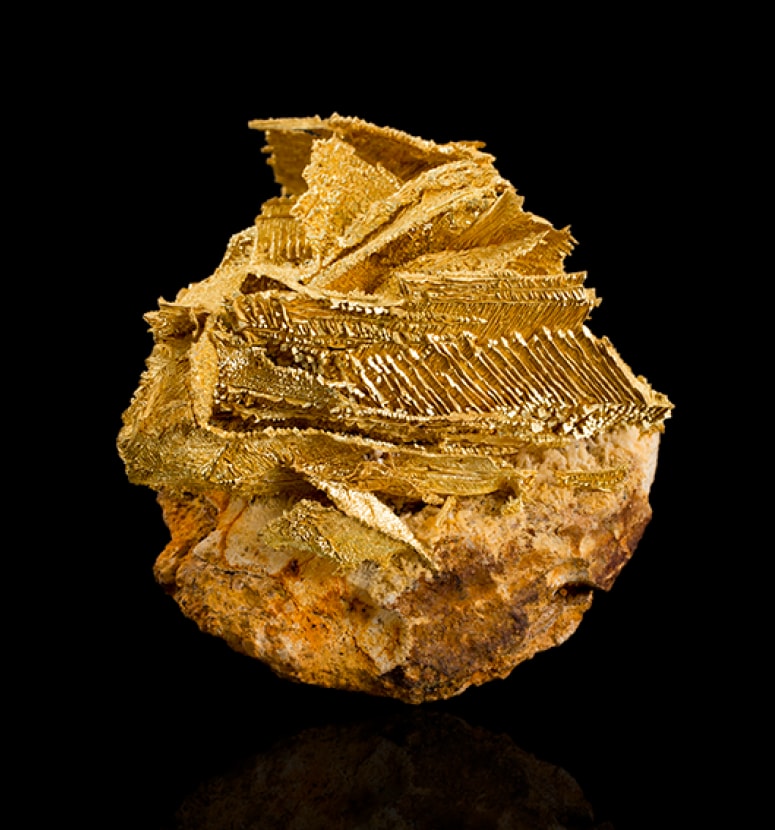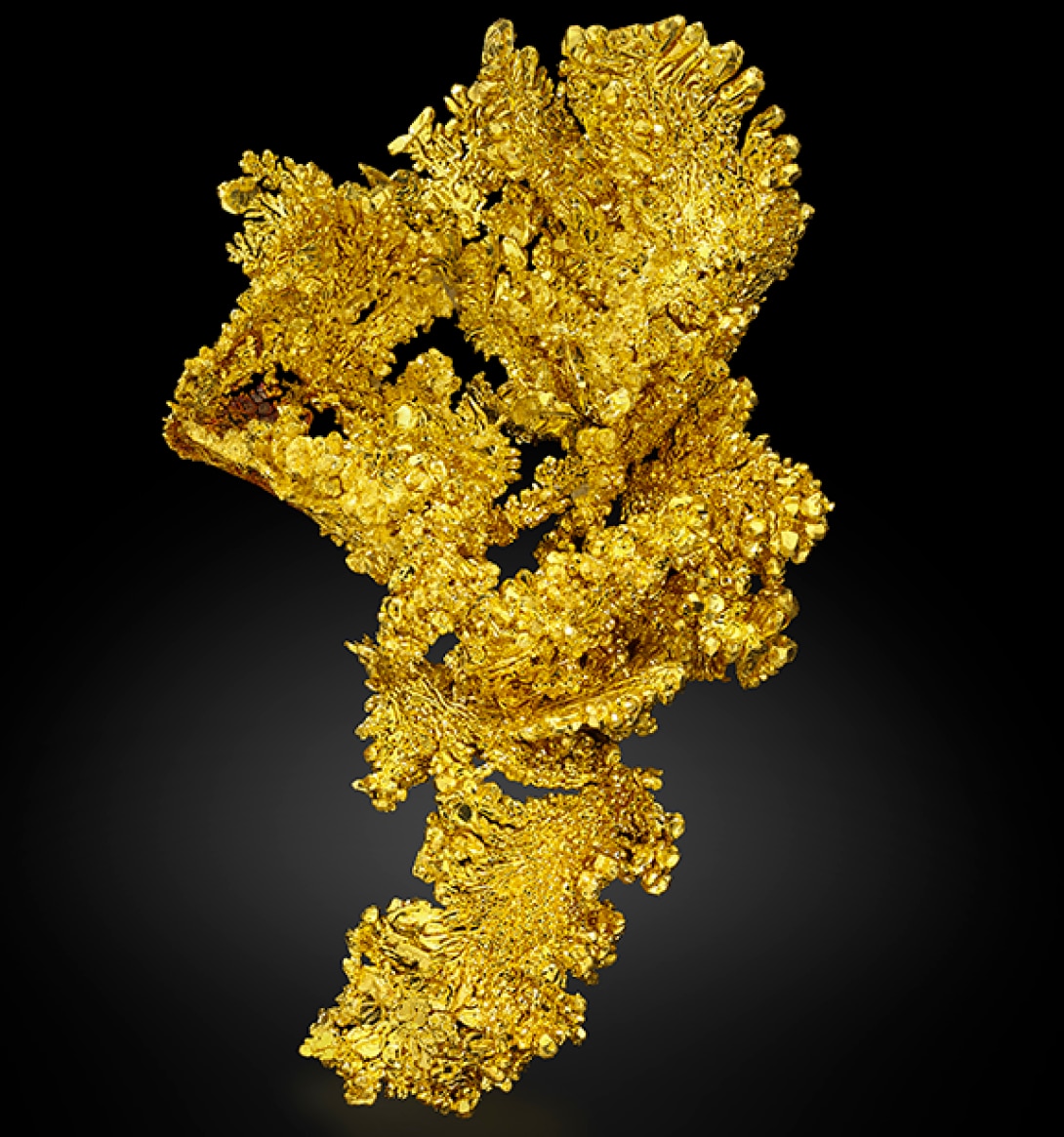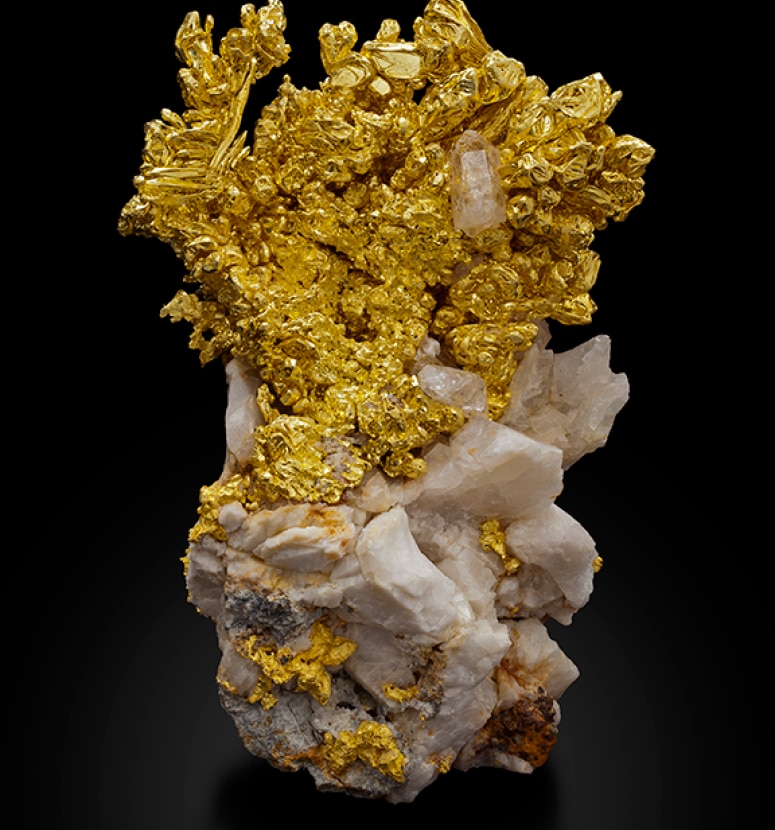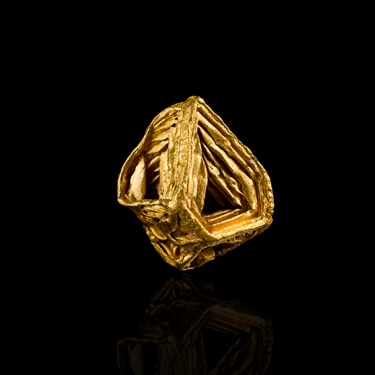
Known, loved, sought-after, coveted, amassed, envied, disputed and used by many civilizations since mankind knew how to master the secrets of metals, gold has always been one of the most precious and symbolic materials. However, more than its color and its brilliance, powerful and almost irresistible fascination, the unique properties of gold made it the favorite metal to adorn Gods.
Auri sacra fames, so said Virgil (The Aeneid, III, 57, 29-19 BCE): this sacred, intense, immoderate hunger for the precious metal has prompted humanity to discover new worlds, to conquer the planet. But beyond the symbols, myths and legends associated with gold, do we really know this yellow and shiny metal? What type of atom does it contain? How is its inner structure organized and which unique properties derive from it? How does nature produce, shape, and make gold available to mankind? How does mankind exploit it, transform it, master it and prepare it for the crafting of extraordinary objects?
Chemical Aspects of Gold

